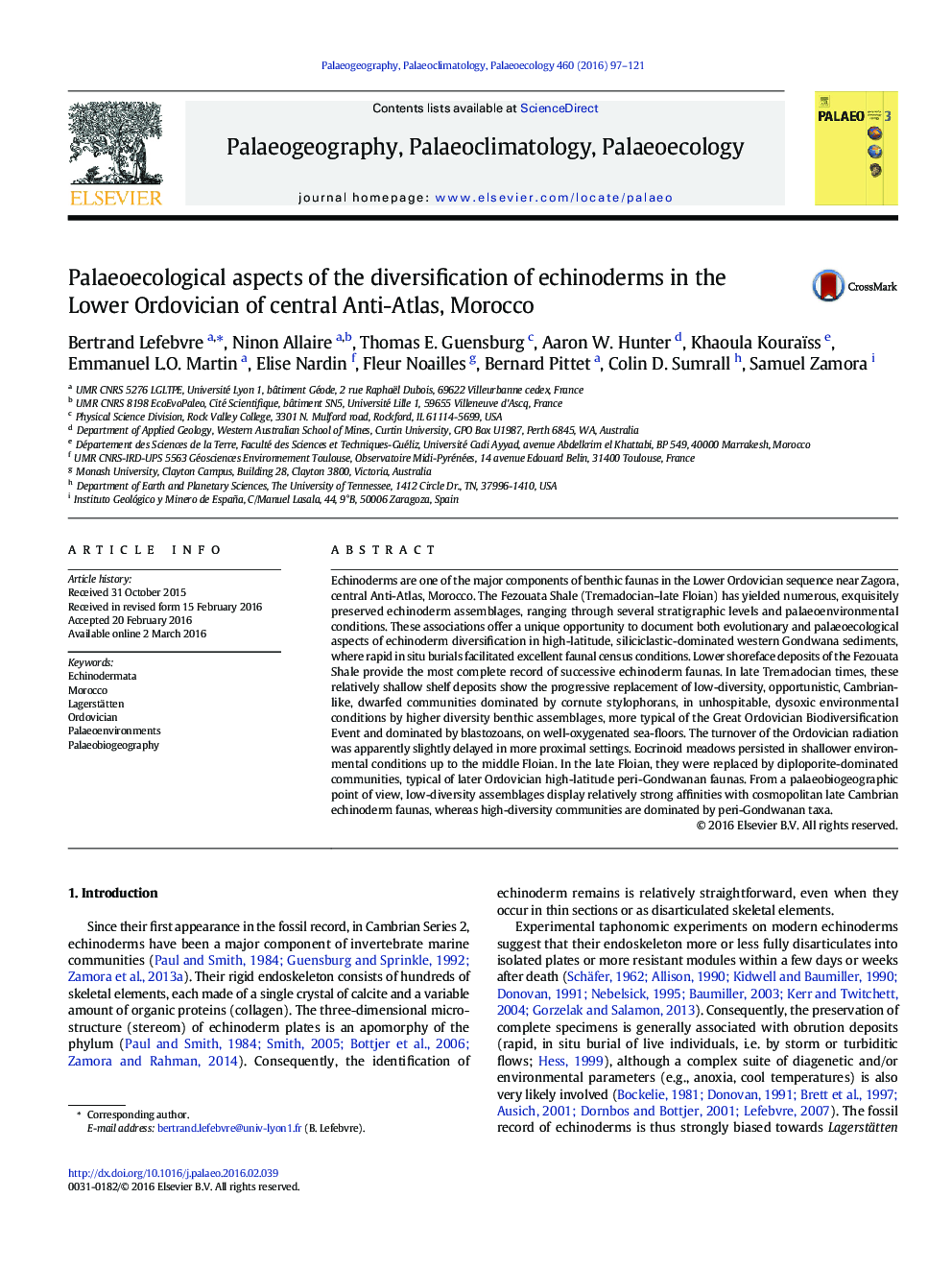| کد مقاله | کد نشریه | سال انتشار | مقاله انگلیسی | نسخه تمام متن |
|---|---|---|---|---|
| 4465566 | 1622131 | 2016 | 25 صفحه PDF | دانلود رایگان |

• Echinoderms are one of the most diverse and abundant groups of the Fezouata Biota.
• Proximal echinoderm meadows dominated successively by eocrinoids and diploporites.
• Two distinct types of echinoderm communities in more distal environments
• Low-diversity, dwarfed, opportunistic stylophoran-dominated assemblages in dysoxic settings
• High-diversity, blastozoan-dominated assemblages in well-oxygenated settings
Echinoderms are one of the major components of benthic faunas in the Lower Ordovician sequence near Zagora, central Anti-Atlas, Morocco. The Fezouata Shale (Tremadocian–late Floian) has yielded numerous, exquisitely preserved echinoderm assemblages, ranging through several stratigraphic levels and palaeoenvironmental conditions. These associations offer a unique opportunity to document both evolutionary and palaeoecological aspects of echinoderm diversification in high-latitude, siliciclastic-dominated western Gondwana sediments, where rapid in situ burials facilitated excellent faunal census conditions. Lower shoreface deposits of the Fezouata Shale provide the most complete record of successive echinoderm faunas. In late Tremadocian times, these relatively shallow shelf deposits show the progressive replacement of low-diversity, opportunistic, Cambrian-like, dwarfed communities dominated by cornute stylophorans, in unhospitable, dysoxic environmental conditions by higher diversity benthic assemblages, more typical of the Great Ordovician Biodiversification Event and dominated by blastozoans, on well-oxygenated sea-floors. The turnover of the Ordovician radiation was apparently slightly delayed in more proximal settings. Eocrinoid meadows persisted in shallower environmental conditions up to the middle Floian. In the late Floian, they were replaced by diploporite-dominated communities, typical of later Ordovician high-latitude peri-Gondwanan faunas. From a palaeobiogeographic point of view, low-diversity assemblages display relatively strong affinities with cosmopolitan late Cambrian echinoderm faunas, whereas high-diversity communities are dominated by peri-Gondwanan taxa.
Journal: Palaeogeography, Palaeoclimatology, Palaeoecology - Volume 460, 15 October 2016, Pages 97–121